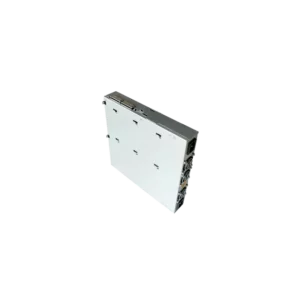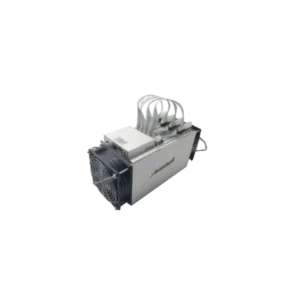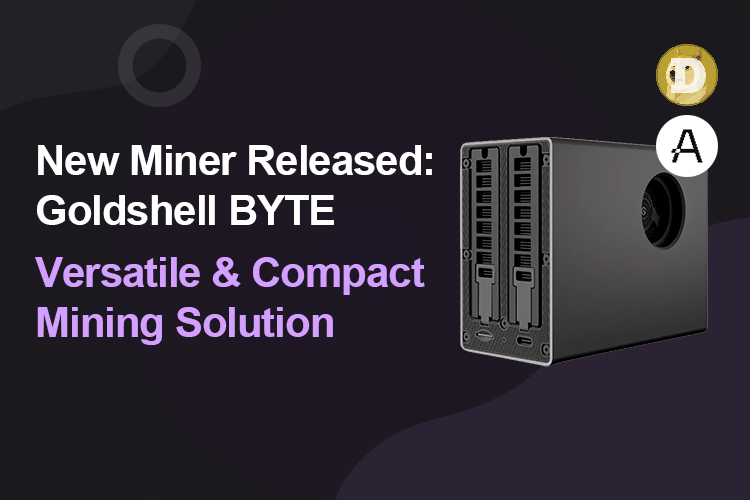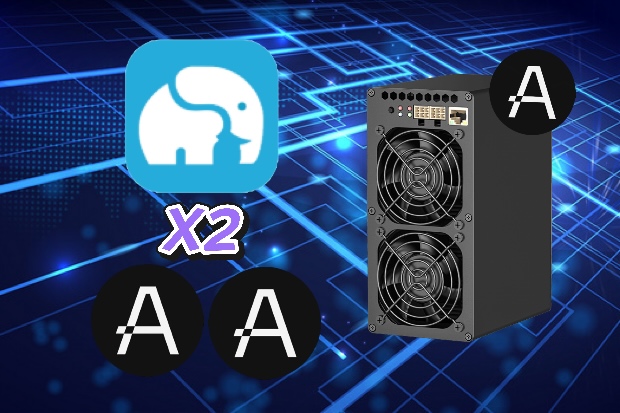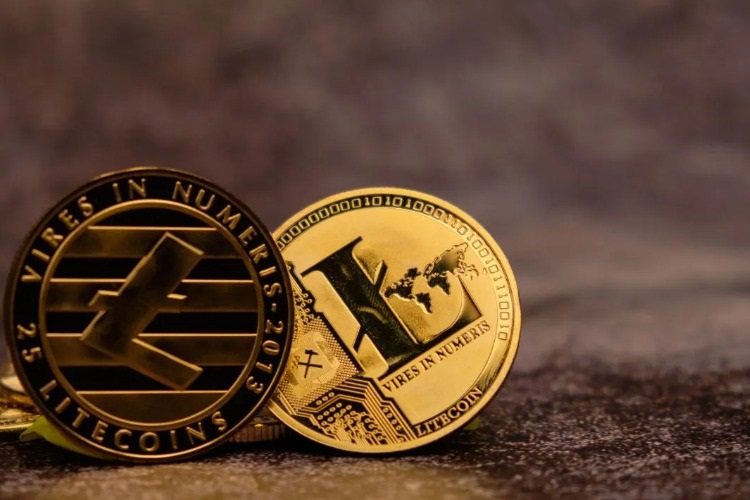
08/03/2023
0 Comments
1. The Litecoin halving is hours away: Here’s what to know
Most people in crypto circles know the block rewards for mining bitcoin will be cut in half next year. Less may be aware that Litecoin’s own halving is happening much sooner.
Like tomorrow.
Miners are given a certain amount of litecoin (LTC) when a block is produced. The reward, which started at 50 LTC per block, gets cut in half after each 840,000 that are mined — roughly every four years.
Currently at 12.5 LTC, the miner rewards are set to become 6.25 LTC on Wednesday.
Like Bitcoin, which caps its supply at 21 million BTC, Litecoin has a limit of 84 million LTC. Roughly 87% of LTC is already in circulation.
Price action on the move
LTC increased by 824% in the months prior to the 2015 halving, Fineqia International research analyst Matteo Greco told Blockworks. It increased 525% in 2019 — reaching a peak seven weeks before the halving.
“The next halving is scheduled for less than 24 hours from now, and if history repeats itself, this means that the 40% increase in price that LTC showed towards the end of June was probably the top price for this mid-term,” Greco said.
LTC reached $113 on July 3, CoinGecko data shows — its highest price since April 2022.
Litecoin’s price was $93.10 at 3 pm ET Tuesday — 4.3% higher from seven days ago and up about 0.5% in the last 24 hours.
“Litecoin’s halvings seem to be a ‘buy the rumor, sell the news’ event on both prior occasions with a large run-up in price in the months before, and a reversal in price action after, suggesting the supply shock is priced in,” CoinShares analyst Max Shannon told Blockworks.
Impact on miners, other crypto tokens?
As rewards for mining litecoin decrease, miners could be impacted from a profit standpoint, Greco said. But, he added, this is counterbalanced by a reduction in the difficulty of mining when hash rate goes down — lowering mining costs.
Youwei Yang, chief economist at BIT Mining, noted that due to Litecoin’s dual-mining mechanism with Dogecoin, impact on miner profitability could be further mitigated. While Litecoin’s block reward is going to be halved, he added, Dogecoin’s block reward remains the same.
“All things considered, at this stage, the halving does not have a big impact in any component and is more a narrative to create volatility and speculation used by investors and traders,” Greco said.
Yang said the lack of significant price movements in LTC, compared to previous halvings, comes despite current low volatility in the crypto market broadly.
“Due to its relatively small size compared to bitcoin and its unique [proof of work]-based nature with specific mining algorithms, the Litecoin halving may not have a substantial impact on bitcoin or other altcoins,” he added.
Litecoin’s hash rate is 786 terahashes per second (TH/s) while bitcoin’s hash rate is roughly 356 exahash per second (EH/s), according to CoinWarz.
Bitcoins traded around $29,130 Tuesday afternoon, down 0.2% from a day ago.
Fort Worth was the first city to adopt bitcoin mining to attract attention. Was it worth it?
A year ago, Fort Worth Mayor Mattie Parker joked the city was now “cowtown and cryptocurrency” after plugging in donated bitcoin mining machines. That news generated millions of web impressions across the world, a nominal amount of money and attracted a blockchain summit to the city.
Since the peak of the industry’s hype in 2021 and the city’s adoption of the machine, the cryptocurrency market lost more than $2 trillion in 2022. Startups, job postings and venture capital fundraising around the crypto industry have also dropped.
Fort Worth city officials are leaving the machine donated by the Texas Blockchain Council running, despite the hype around the industry slowing down. The city will not disclose the amount of money it takes to keep the machine running.
Fort Worth first adopted two bitcoin machines in April 2022, becoming the first city to mine bitcoin. Quinn PR crafted a media campaign to promote Fort Worth’s tech-friendly leadership. The media attention generated more than 752 million web impressions in six months, according to the city. Headlines in national news outlets, such as USA Today, read: “Fort Worth, Texas becomes first in the US to mine bitcoin: ‘Where the future begins.’”
In interviews with major TV news outlets, Parker said the pilot project was about making the city at the forefront of tech and innovation.
Critics of the crypto industry cite concerns about the machine’s energy consumption in a state with a fragile power grid. The Texas Blockchain Council, the industry association that donated the three machines, and city officials maintained the machines take up the same amount of energy as a vacuum cleaner.
Two months later, the city traded the machine for a more energy-efficient machine. Carlo Capua, chief of strategy and innovation at the City of Fort Worth, recommended keeping the machines going at a city council meeting last November. The miner running in the city’s server room has generated nearly $2,000 after electricity costs since being plugged in, Capua said.
“The goal wasn’t to make money, that wasn’t the primary objective,” Capua said. “It was for people to know about the city, know that Fort Worth is a dynamic, forward-thinking city and doing innovative things that no other cities have done. So in that sense, it’s been very successful.”
The mining machine is profitable every month, Capua said, but he declined to provide the total energy cost since it was plugged in. The machine, a Bitmain S19 J Pro, takes 2,950 watts to operate. The city runs the machine 24 hours a day, seven days a week.
“Our rate with our energy provider is confidential, so I’m afraid I can’t share the total electricity cost as it would be easy for someone to reverse engineer our rate,” Capua wrote in an email.
One tangible result of the pilot program is the Texas Blockchain Council moving its Texas Blockchain Summit from Austin to the Fort Worth Convention Center in November. Lee Bratcher, president of the Texas Blockchain Council, said the council decided to move the summit because of the city’s friendliness to the industry. He expects more than 1,000 attendees at the summit, which occurs Nov. 15-17.
“We’re really excited about that and excited for what that means for the city and for the leap of faith that Mayor Parker took when she decided to do this initiative,” Bratcher said.
2. Binance Secures Operational MVP License in Dubai, Kyrgyzstan Expands Bitcoin Mining
Binance, the world’s leading cryptocurrency exchange, has announced that it has become the first exchange to secure an operational Minimum Viable Product (MVP) license in Dubai. This license, granted by the Dubai Multi Commodities Centre (DMCC), allows Binance to offer crypto trading and custody services to customers in the region.
The DMCC is a government entity established in 2002 to enhance commodity trade flows through Dubai. It is home to over 18,000 companies, ranging from multinational corporations to start-ups. The DMCC has been actively promoting the development of the crypto ecosystem in Dubai, launching a Crypto Centre in May 2021 to provide a comprehensive platform for businesses and individuals to access crypto-related services.
Dubai Multi Commodities Centre (DMCC) is the leading free zone in the Middle East for trade, enterprise and commodities. Established in 2002, DMCC offers a range of benefits and incentives to its members, including 100% foreign ownership, 0% personal and corporate income tax, full repatriation of capital and profits, and access to world-class infrastructure and services.
DMCC is home to over 19,000 companies from various sectors and industries, such as precious metals, diamonds, pearls, tea, coffee, spices, agro, energy, technology, healthcare, education and more. DMCC also hosts the Dubai Diamond Exchange, the Dubai Gold and Commodities Exchange, the Dubai Pearl Exchange, the DMCC Tea Centre and the DMCC Coffee Centre.
DMCC is committed to fostering innovation, sustainability and growth in the commodities sector, as well as supporting the vision of Dubai as a global hub for trade and commerce. DMCC has received several awards and accolades for its excellence in service delivery, governance and regulation, such as the Global Free Zone of the Year by the Financial Times’ fDi Magazine for seven consecutive years.
Binance’s MVP license is a significant milestone for the exchange, as it demonstrates its commitment to comply with the local regulations and standards. Binance will leverage its global expertise and resources to offer a secure, reliable and innovative crypto platform for its customers in Dubai and beyond.
Binance CEO Changpeng Zhao (CZ) said: “We are honored to receive the MVP license from the DMCC, which is a testament to our efforts to foster a more inclusive and accessible crypto industry. Dubai is a global hub for trade, innovation and entrepreneurship, and we are excited to be part of its vibrant crypto community. We look forward to working closely with the DMCC and other stakeholders to advance the adoption of crypto assets and blockchain technology in the region and beyond.”
DMCC Executive Chairman and CEO Ahmed Bin Sulayem said: “We are delighted to welcome Binance as the first exchange to secure an operational MVP license in Dubai. Binance is a global leader in the crypto space, and we are confident that their presence in the DMCC will contribute to the growth and development of the crypto ecosystem in Dubai. The DMCC Crypto Centre is designed to provide a comprehensive platform for crypto businesses and investors, and we are committed to supporting innovation and excellence in this sector.”
If you are looking for a dynamic and diverse environment to start or expand your business, DMCC is the ideal choice for you. You can benefit from the unparalleled network of opportunities, connections and resources that DMCC offers.
3. Kyrgyzstan Expands Bitcoin Mining with Government Backing at Hydro Power Plant
Bitcoin mining is a process that consumes a lot of electricity and generates a lot of heat. Therefore, finding a cheap and reliable source of energy is crucial for the profitability and sustainability of this activity. In Kyrgyzstan, a Central Asian country with abundant hydroelectric resources, the government has decided to support the development of Bitcoin mining by providing access to low-cost electricity from a state-owned hydro power plant.
The Kyrgyz government has signed a memorandum of understanding (MoU) with BitRiver, a Russian company that operates one of the largest Bitcoin mining facilities in Siberia. The MoU grants BitRiver the right to use up to 300 megawatts (MW) of electricity from the Toktogul hydro power plant, which has a total capacity of 1,200 MW and is the largest in the country.
The MoU also stipulates that BitRiver will invest in the construction of a data center near the power plant, which will host the mining equipment and provide services to local and international clients. The data center is expected to be operational by the end of 2022 and will create hundreds of jobs in the region.
The Kyrgyz government hopes that this initiative will boost the country’s economy, which has been hit hard by the Covid-19 pandemic and political instability. The country’s gross domestic product (GDP) contracted by 8% in 2020, according to the World Bank. The government also sees Bitcoin mining as a way to diversify its energy exports, which currently rely heavily on selling electricity to neighboring countries.
BitRiver’s CEO Igor Runets said that Kyrgyzstan is an attractive destination for Bitcoin mining because of its low electricity prices, which are among the lowest in the world. He also praised the government’s openness and willingness to cooperate with the crypto industry.
“Kyrgyzstan is one of the few countries in the region with a surplus of electricity generation. The country has great potential to become one of the key Bitcoin mining hubs in Central Asia,” Runets said.
Kyrgyzstan is not the only country in the region that is exploring the potential of Bitcoin mining. Kazakhstan, another former Soviet republic with abundant natural resources, has also seen a surge in crypto mining activity in recent years. According to Cambridge University’s Bitcoin Electricity Consumption Index, Kazakhstan ranks fourth in the world in terms of Bitcoin mining share, behind China, the US and Russia.
However, Bitcoin mining also has significant environmental impacts that need to be considered. Bitcoin mining is estimated to be responsible for 0.1% of world greenhouse gas emissions, according to Wikipedia. Bitcoin mining generates air pollution caused by coal-fired electricity generation, as well as e-waste due to the short life expectancy of bitcoin-mining equipment. A single Bitcoin transaction is estimated to burn 2,292.5 kilowatt hours of electricity, enough to power a typical US household for over 78 days, according to Investopedia.
While Kyrgyzstan’s hydro power plant may offer a cleaner source of energy than fossil fuels, it is not without its drawbacks. Hydro power plants can disrupt natural ecosystems, affect water quality and quantity, and displace local communities. Moreover, hydro power plants are vulnerable to climate change, which can affect their water supply and output.
Therefore, it is important to weigh the economic benefits of Bitcoin mining against its environmental costs, and to explore ways to reduce its carbon footprint. Some possible solutions include switching to renewable energy sources, improving energy efficiency, adopting alternative consensus mechanisms, such as proof-of-stake or proof-of-authority, that do not require intensive computation, and implementing carbon taxes or offsets.


